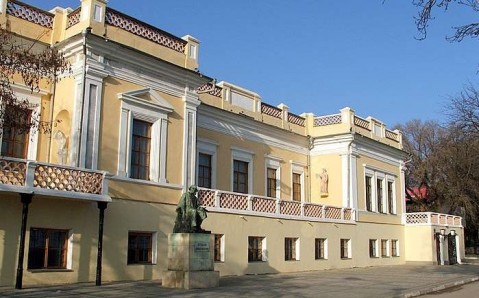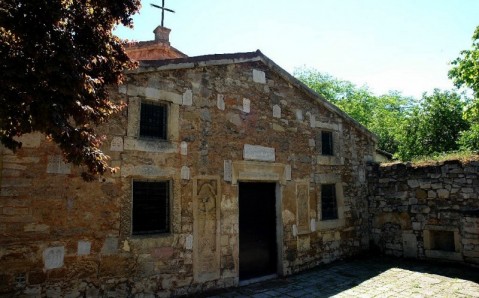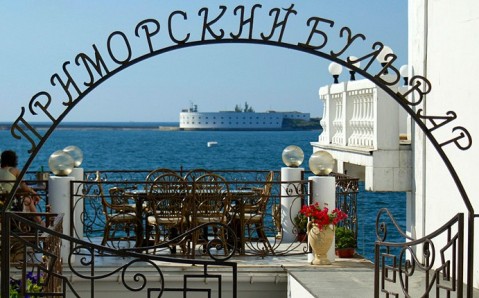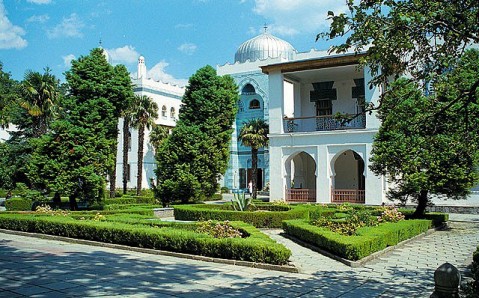Surb Khach Monastery
•
Feodosiya
Surb Khach Monastery
•
Feodosiya
The medieval monastic complex Surb Khach is situated in the picturesque mountain and woody area, within three kilometers from the town Staryi Krym. Its name means Monastery of the Holy Cross in Armenian. Being reminiscent of an age-old defensive fortress, Surb Khach is one of the peninsula’s most interesting monuments of Armenian sacral architecture that preserve the spirit and atmosphere of the M
Genoese Fortress
•
Feodosiya
Genoese Fortress
•
Feodosiya
In the Middle Ages Feodosiya's Genoese Fortress was one of the most powerful fortification systems in Europe. Over time it lost its former grandeur and impregnability, but even today its threatening towers and walls, standing in different parts of the town, make a strong impression.
The massive defensive complex was built here in the 14th century by the Genoese, which needed to protect their large
I.K. Aivazovsky National Art Gallery
•
Feodosiya
I.K. Aivazovsky National Art Gallery
•
Feodosiya
The name of the Russian prominent marine painter Ivan Aivazovsky, whose pictorial works are shown in different museums of the world, is strongly tied with Feodosiya's history, and the National Art Gallery of his name is one of the town's main decorations. Its vast exposition has no analogues in the whole world and is situated in the building, where the famous writer lived and worked.
Aivazovsky wa
Armenian Church of the St. Sergiy (Surb Sarkis)
•
Feodosiya
Armenian Church of the St. Sergiy (Surb Sarkis)
•
Feodosiya
The ancient Armenian Church of the St. Sergiy is among Feodosiya's most interesting architectural monuments. The temple, built in the middle of the 14th century, is one of the few medieval cultic buildings on the Crimea's territory that remained intact until now.
Built according to all Armenian medieval architectural canons, the Church of the St. Sergiy is notable for simple and airy forms. Its ma
Primorsky Boulevard
•
Sevastopol (154 km.)
Primorsky Boulevard
•
Sevastopol (154 km.)
The green ribbon of Primorsky Boulevard meanders along one of Southern side’s most picturesque slopes, in the city’s historical part. It has been the favorite walking and recreation place of Sevastopol’s locals and guests for almost a century and a half. It is one of the city’s most beautiful green areas, which attracts not only with cozy lanes and observation areas, featuring amazing views of the
Foros’s Church (the Church of the Resurrection)
•
Yalta (145 km.)
Foros’s Church (the Church of the Resurrection)
•
Yalta (145 km.)
Foros is associated with elegant temple, situated on the 400-meter-high cliff and soaring above the sea, probably more often than with its splendid beaches, warm sea and amazing sceneries. It is the Church of the Resurrection, resort’s main symbol and genuine adornment of the Southern Coast of Crimea.
The magnificent temple in Byzantine style was raised in 1892, thanks to the merchant and Maecenas
Dulber Palace
•
Yalta (123 km.)
Dulber Palace
•
Yalta (123 km.)
The elegant Dulber Palace, built in the late 19th century for the Prince Pyotr Nikolayevich, an uncle of the last Russian Imperator Nicholas II, is one of the brightest architectural gems at the Southern Coast of Crimea. Its fabulous snow-white asymmetric building with silver cupolas and elegant turrets noticeably stands out against a background of fantastic Crimean Mountains’ sceneries and is rec
Yeni-Kale Fortress
•
Kerch (101 km.)
Yeni-Kale Fortress
•
Kerch (101 km.)
The former Turkish fortress Yeni-Kale, whose picturesque fragments stand on the coast in the eastern part of the city, is a valuable monument of architecture and is reckoned among the most interesting and symbolic attractions of Kerch. The powerful fort with original shapes was built by Turks in the early 18th century, during aggravation of the conflict between the Ottoman and the Russian empires,
Kalamita Fortress
•
Sevastopol (149 km.)
Kalamita Fortress
•
Sevastopol (149 km.)
The ruins of the once majestic Kalamita fortress, standing on the picturesque Monastic Rock’s plateau in the Sevastopol outskirts, is one of the most interesting monuments of medieval Crimea’s fortification architecture, which is rightly reckoned among the most unique sights on the peninsula.
The first fortifications appeared here back in the 6th century. Built by Byzantines, they served as protec

 Crimea
Crimea









